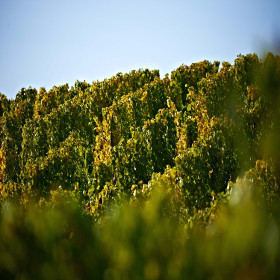Ecological winery Wedekind
Vineyard Wedekind on the upswing: Red soil, best sites and a lot of greenery for Riesling, Pinot Noir and PIWI
It started with 1 hectare of Riesling and Pinot Noir in Nierstein-Schwabsburg. From the beloved hobby of the parents Gudrun and Reiner Wedekind the foundation for the winery Wedekind was born.
The spark quickly jumped over to son Philipp Hannes Wedekind.
Having completed his studies in Geiseheim, he decided to expand the winery and consistently rely on controlled organic viticulture in 2005. The winery has been a member of Ecovin since 2008.
In the meantime, the vineyard area has grown to over 8.5 hectares.
Low yields, hand-picking and two selective early harvsts before the general harvest express the terroir of the red earth.
German and English are spoken on the estate.



















